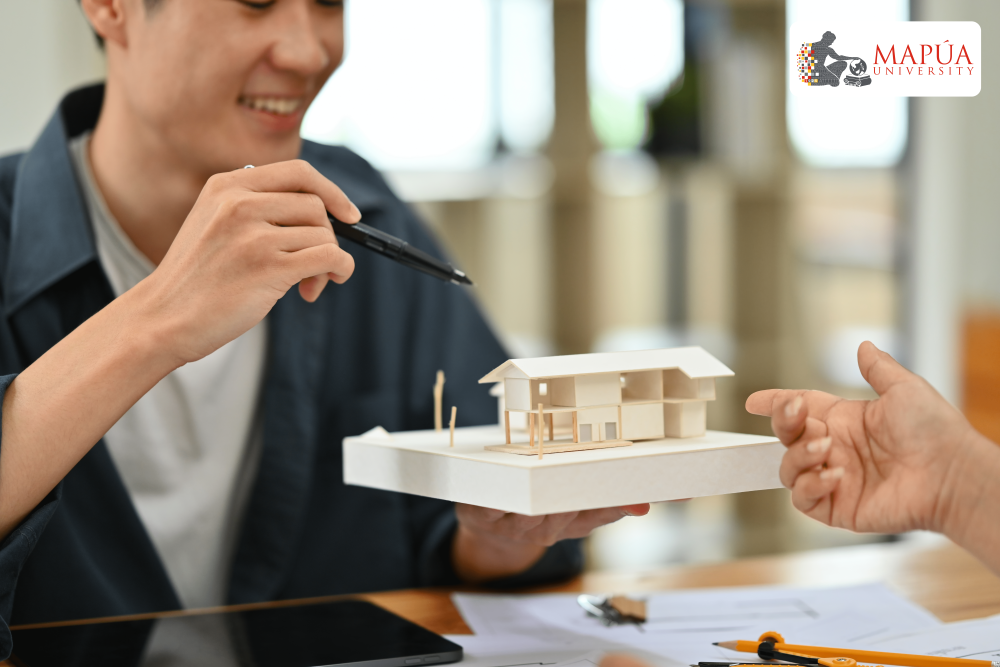The rising heat indexes over the past weeks have been uncomfortable and unbearable to most Filipinos—even those already indoors. Although using air conditioners, portable air coolers, and electric fans is a quick fix to deal with the heat, they’re not sustainable or economical in the long run. Besides global warming, the dwindling tree cover, and pollution, short-sighted construction designs have made certain houses and buildings feel even hotter during these extreme heat conditions.
Architect Perry Sanga, Program Chair of Mapúa’s Architecture program, explained that some buildings and homes retain heat due to poor ventilation, narrow fenestration or arrangement of windows that prevent air from coming in, usage of poor construction materials that allow rather than avert heat gain, and low ceiling height. He also said that some structures are built without considering the sun’s orientation, while others don’t have proper building setbacks installed in the front, sides, or rear.
Fortunately, there are several remedies to make homes more livable during these record-high temperatures. Architect Sanga suggested low-cost solutions for homeowners on a budget, including installing sunshades or baffles on windows directly hit by the sun to reduce heat gain. Installing a sunscreen on an open area or pavement near the house can also reduce heat by 50 to 70 percent. Using Venetian blinds and a motorized fan to promote air circulation can make a room feel cooler.
Those looking for a more long-term solution can consider replacing their existing window panels with double-glazed panes. These double-layer glass panels minimize heat gain and soundproof a room from outside noises. Homeowners should exchange their curtains for heavy draperies, install inverter air conditioning units in functional rooms, and install solar panels to reduce electricity bills.
Another critical area homeowners should watch out for is the paint color of their house. Architect Sanga cautioned that dark-colored paint can contribute to a building’s heat gain, particularly when used on the roof. It’s better to use lighter colors like white or beige for minimal heat absorption.
In tandem with this, they can use insulated roof panels instead of the typical galvanized iron sheets. These insulated roof panels provide excellent thermal insulation by preventing outside heat from penetrating the interiors of a house or building.
Although these solutions can make houses more comfortable, Architect Sanga stressed that the best way to ensure a pleasant and comfortable space, regardless of the weather conditions, is to consult an architect who can address the issue during the planning and design stage before construction commences.
The architect can then consider the building orientation according to the sun’s path, setbacks based on building codes, allocate wider spaces for rooms for better air circulation, cross ventilation, wider fenestration, and ceiling height, install an opening or attic to let hot air out, and wisely choose construction materials that have thermal insulation. He can also apply passive ventilation design principles to tackle heat gain control and heat loss and improve indoor temperatures using little or no energy consumption.
He emphasized the usefulness of the passive cooling principle, usually found in a typical bahay kubo, which can be integrated into future house and building designs. Architect Sanga then elaborated that the bahay kubo’s structure and design are still relevant today.
“We should rethink the design principle of a bahay kubo, especially for tropical countries like the Philippines. It has characteristics of a tall, raised above-the-ground structure (in case of flooding) and steeply pitched roofs that allow air to circulate and hot air to go up and exit. Its walls allow airflow and have wider window openings for larger amounts of air to circulate, as well as spaces underneath that can be used for living, storage, and ventilation. It’s a very sustainable design principle that can easily repaired using local materials if damaged by natural disasters,” explained Architect Sanga.
His suggestion, or a semblance of it, might just become a reality in the future, as Mapúa, an architecture school in the Philippines, has been exposing and encouraging its students to devise novel and bold design strategies that could answer pressing local and international architecture and design problems such as the effects of global warming and climate change.
Resilient, people-friendly, and environmentally sound design structures are just some subjects taught to the university’s architecture students. The five-year ABET-accredited Architecture program is part of the university’s School of Architecture, Industrial Design, and the Built Environment. Known for its emphasis on innovation and creativity, the program trains professionals who can develop visionary designs that also inspire transformative change in the industry.
To learn more about how you can join the ranks of the global-ready Mapúans, visit https://bit.ly/AskMapua.




